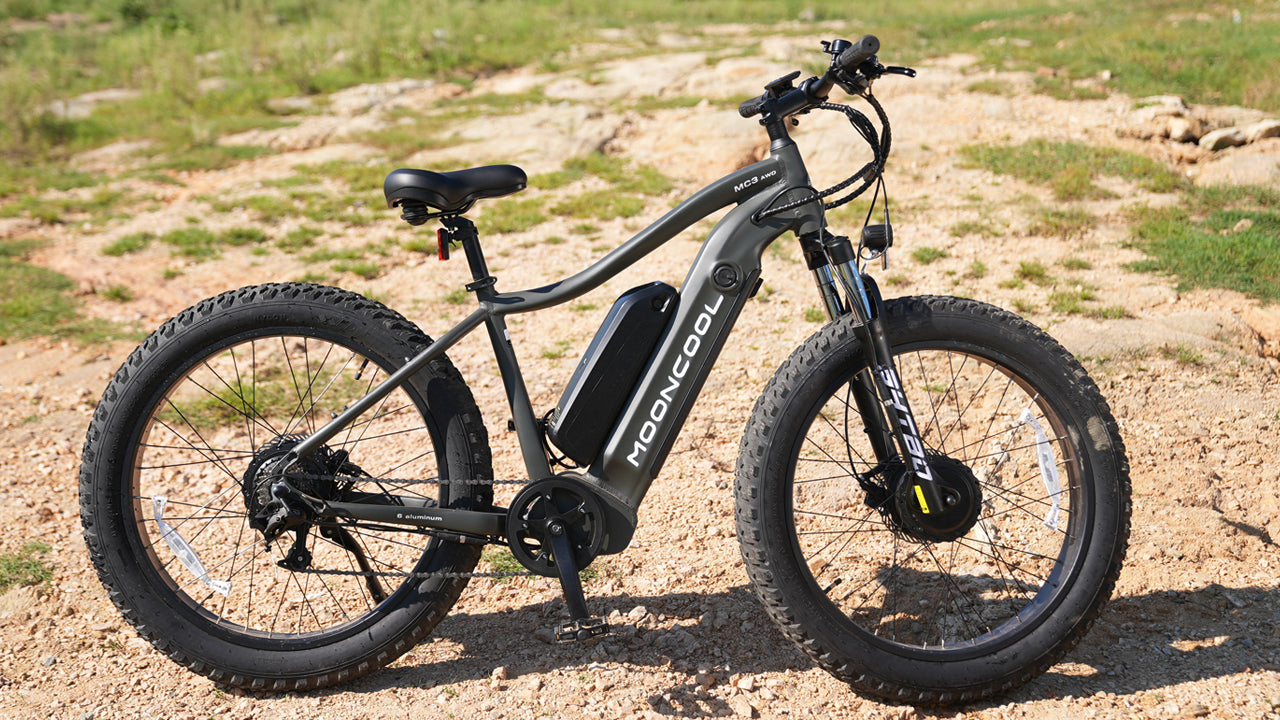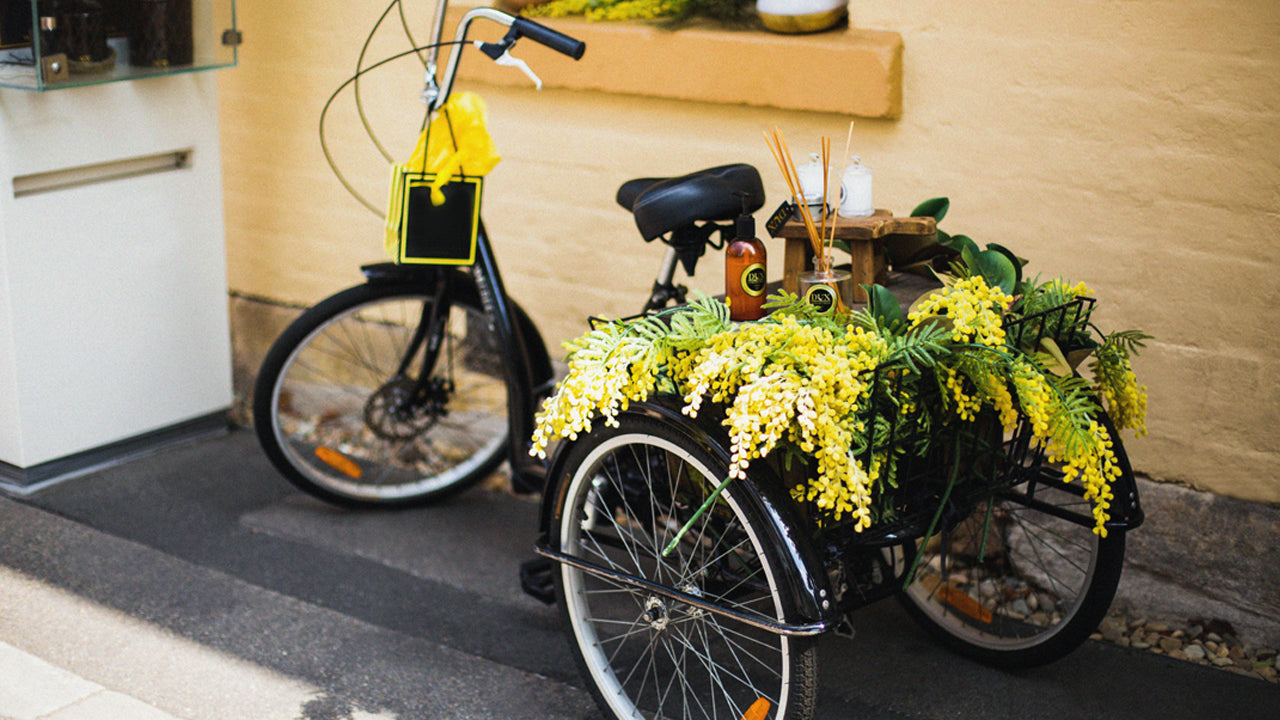When winter blows in, most bikes get stored away until spring. But fat tire e-bikes laugh in the face of snowdrifts. With their supersized tires, customized builds, and rugged components, fat bikes unlock winter as a new season of adventure. Snow-covered trails that were once inaccessible can now be conquered with the right preparations. Dive into this complete guide to float through powder, find traction on ice, and discover the joy of riding your fat tire e-bike in the snow.
Can You Really Ride Fat Tire E-Bikes in the Snow?
Yes, fat tire e-bikes were originally designed for riding in the snow. Their ultra-wide tires provide enhanced floatation, traction, and control that allow them to handle snow conditions that would stop most standard mountain bikes.
Fat tire widths start at around 3.8 inches and exceed 5 inches, compared to normal mountain bike tires of only 1.5-2 inch widths. This increased surface area prevents sinking into soft powder and allows the tire to mold to the terrain for optimal snow floatation.
Additionally, full-suspension fat tire e-bikes offer an even smoother snow riding experience. Front shocks absorb bumps, while rear suspension dampens vibrations from uneven terrain.
In short, while all pedal-assist e-bikes can manage light snow to some degree, a purpose-built fat tire e-bike is engineered specifically for deep snow versatility. Their ultra-wide tires and customized components enable fat e-bikes to traverse winter landscapes that no other bike can.

How to Choose the Best Fat Tire E-bike for Snow Riding
Not all fat tire e-bikes are created equal when it comes to snow performance. Here are the key features to look for when selecting the optimal snow-riding fat bike:
1. Choose a Durable Aluminum Frame for Reliability
The durability and strength of aluminum make it the ideal frame material for a snow-riding fat bike. Aluminum provides reliable performance year after year, while the lighter carbon fiber frames are more prone to cracking when subjected to repeated rough rides, minor crashes, and loading heavy gear.
Aluminum's stiffness prevents the frame from flexing excessively and maintains stable handling. This stiffness also allows the frame to transfer pedaling and motor power efficiently to move you forward through soft snow. With its fatigue life and dent resistance, an aluminum frame is built to last through seasons of winter adventure.
2. Pick a Rear Hub Motor to Avoid Snow Jamming the Gears
Rear hub motor designs fully seal the motor inside the rear wheel hub, protecting it from snow, slush, and debris. This prevents snow from packing into the motor gears and causing potential jamming issues that could disable the e-bike in the middle of a ride.
Mid-drive motors position the motor in the middle of the bike, requiring external gearing that is more exposed. Snow easily packs into these gears, increasing friction and grinding down the motor over time. The reliable all-season performance of a rear hub motor makes it the best choice for winter e-bike riding.
3. Tires Wider Than 3.8" Enable Floating Over Powder
For optimal floatation and control when riding through freshly fallen snow, tire widths in the range of 3.8 to 5 inches prevent the bike from sinking into the powder. Narrower tires under 3.8 inches will require more pedaling effort and momentum in deep snow, while wider tires allow you to float gracefully along the surface.
The wider tire surface area also smooths out the bike's handling, enhancing control on uneven snow surfaces. Wider tires conform to the contours of the terrain, delivering stability and preventing washouts on curves. Flotation-enabled riding makes winter trails more accessible and enjoyable.
4. Deep, Spaced-Out Tread Lugs Perform Best in Snow
Large lugs with channels between them extend the tire's grip by penetrating unpacked snow cover and channeling away built-up snow inside the tread, preventing slippage.
The deeper and more aggressive the tread pattern, the better it can grab into soft snow for optimal traction while shedding snow and debris through its channels. Tires lacking deep lugs are prone to washing out, losing momentum, and slipping in powdery snow conditions.
5. Full Suspension Absorbs Bumps and Provides Control
Front shock forks compress to absorb bumps and jolts from uneven snow surfaces, while the rear suspension smooths out the ride to maintain control in slushy or icy conditions. This allows you to traverse bumpy, ungroomed snow trails in comfort and with reliable handling.
Without suspension, the rigid frame transfers every vibration and sudden impact directly to the rider. This can lead to loss of control and difficulty maintaining direction when rattled by bumps in the snow. Suspension allows you to stay planted and in control when riding over powder, ice chunks, and mixed winter terrain.
6. Rely on Hydraulic Discs for All-Weather Stopping Ability
Consistent, all-weather braking control is crucial for winter riding. Hydraulic disc systems automatically adjust pad depth as the pads wear down, maintaining optimal braking power at all times.
The hydraulic fluid transfers force evenly for reliable stopping power, even in wet conditions. Discs shed snow, ice, and slush buildup far better than rim brakes. Having full confidence in your ability to brake and stop smoothly enhances handling and safety in slippery conditions.
More info about choosing the Best Fat Tire E-bike for Snow Riding here.
How to Prepare Your Fat Tire E-bike for Snow Riding

Dialing in your fat tire e-bike setup for winter will make snow riding much more manageable. Follow this pre-ride checklist:
- Lower your tire pressure– Fat tires need lower inflation around 15-20 PSI to increase surface contact. This prevents sinking into powder.
- Install tire studs if needed– Studs are ideal for hard-packed snow and icy areas. Use them depending on your local conditions.
- Lubricate the drivetrain– Wet lubricants prevent freeze-up. Reapply after rides to flush water and salt.
- Add fenders and protective bags– Keep snow spray off your bike and gear with full fenders. Use waterproof bags.
- Install lights– Boost visibility in grey winter light with bright head and tail lights.
- Wear bright reflective clothing– Visibility is safety. Wear high-vis outer layers and keep lights charged.
- Get snow riding glasses or goggles– Protect your eyes from wind chill and snow glare.
Riding Techniques for Fat Tire E-Bikes in Snow
Once your fat e-bike is prepped for winter, adjusting your riding technique is key to success on the snowy trails.
- Ride cautiously and stay in control– Slow down and allow a longer braking distance. Sudden movements can cause a loss of control.
- Avoid tightly packed snow– Your tires will sink in and lose floatation. Stick to fresh powder or groomed trails.
- Stay centered on the saddle– Keep your weight balanced over the rear tire for optimal traction. Don't shift forward.
- Pedal smoothly– No hard pedaling or abrupt power. Smooth rotations optimize tire grip and prevent wheel spin.
- Use lower assist modes– Conserve battery life and prevent torque spin-outs by limiting assist. More momentum in deep snow.
- Steer gently– Make wide, arcing turns. Avoid sharp, lean angles and sudden movements.
- Brake earlier– Discs work great in the snow but allow longer stopping distances. Start braking twice as early.
- Walk through stuck points– If you lose momentum and get stuck, get off and walk through deep piles.
- Cross ice/tracks at 90 degrees– Crossing slippery obstacles head-on minimizes loss of control.
More tips for safe riding here.
How to Maintain Your Fat Tire E-Bike for Snow Riding
Riding in winter conditions subjects your e-bike to more abuse. Keep your fat tire machine in top shape with proper maintenance:
- Rinse away salt and slush after every ride– Prevent corrosion and rust by cleaning off snow residue and road treatment chemicals.
- Dry your bike thoroughly– Eliminate all moisture that can freeze and damage components. Store the bike somewhere warm.
- Inspect for damage– Check fork seals, frame, wheels, and drivetrain for cracks and bent parts after hard rides.
- Keep the chain lubricated– Frequent wet lube applications prevent snow and ice buildup in the drivetrain.
- Refill tire pressure after rides– Low pressure enhances snow float, but refill after to prevent sidewall tears.
- Monitor battery charge– Store the battery indoors and charge it frequently. Cold kills battery life.
- Store indoors when possible– Protect your e-bike from the elements when not riding to prevent corrosion and frost damage.
Conclusion
Don't let winter weather stop you from riding! With the right fat tire e-bike and preparation, snow-covered trails and white landscapes can become your new playground. Embrace the challenge of winter adventure. Float through powder, find traction on ice, and let your fat tire e-bike empower you to discover new winter joyrides. This season, go out and own the snow - you have the perfect bike for it.
Read More
- Safety Tips for Buying Electric Trikes: Choose the Best with Confidenc
- Electric Trike Maintenance Tips: Keeping Your Trike in Top Condition!
- Why Electric Trikes are Perfect for Neighborhood Meetups and Friend Da
- Electric Trikes for Seniors: Unlock Ultimate Mobility & Independence!
- A Gift Every Family Member Will Love: Electric Trikes! Why?




Leave a Comment
This site is protected by hCaptcha and the hCaptcha Privacy Policy and Terms of Service apply.